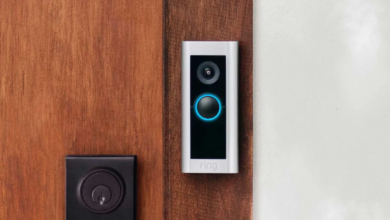How to Protect Devices from Cyber Attacks

The modern digital era demands heightened vigilance to protect personal and professional devices from cyber attacks. With the increasing sophistication of hackers, taking proactive measures to safeguard your devices and data has never been more critical.
Protect Devices from Cyber Attacks
Cyber attacks are malicious activities carried out by hackers to steal, manipulate, or destroy digital information. Common types include phishing scams, malware, ransomware, and Distributed Denial of Service (DDoS) attacks. Each poses unique threats, from stealing sensitive data to rendering systems inoperable.
Hackers often exploit weak points like outdated software, weak passwords, or unsuspecting users clicking malicious links. Recognizing these threats is the first step to fortifying your defenses.
Why Protecting Devices Matters
Failing to secure your devices can lead to severe consequences. Data breaches often result in:
- Financial Losses: Hackers can siphon funds directly from your accounts or demand ransom to release locked systems.
- Privacy Violations: Personal photos, sensitive messages, or health data can fall into the wrong hands.
- Data Theft: Losing critical files or proprietary business information can harm your reputation or operations.
Read More : How to Use Digital Assistants: Transforming Your Daily Tasks with Smart Technology
Securing Your Devices
Keeping Software Updated
One of the simplest ways to protect your devices is to ensure all software and operating systems are up-to-date. Updates patch vulnerabilities that hackers frequently exploit. Enable automatic updates for critical programs.
Using Strong Passwords
Use unique passwords for each account. Incorporate numbers, symbols, and a mix of uppercase and lowercase letters. Consider using a password manager for added convenience.
Installing Security Software
Antivirus and anti-malware programs detect and neutralize threats. Choose reputable software with features like real-time scanning and automatic updates.
Protecting Smartphones
Avoiding Malicious Apps
Download apps only from trusted sources like Google Play or the Apple App Store. Check app permissions before installation to avoid granting unnecessary access.
Using Two-Factor Authentication (2FA)
Adding an extra layer of security through 2FA can deter unauthorized access. Most major platforms offer this feature, which sends a verification code to your phone or email.
Encrypting Data
Enable encryption on your device to ensure that even if stolen, your data remains inaccessible.
Shielding Your Computers
Installing Firewalls
Firewalls act as a barrier between your device and potential threats. Both hardware and software firewalls are crucial for network security.
Backing Up Data
Regular backups ensure that you won’t lose essential information during an attack. Use cloud storage or an external hard drive for redundancy.
Using Secure Networks
Avoid public Wi-Fi unless using a Virtual Private Network (VPN). Public networks are a haven for cybercriminals, often exploiting unencrypted connections.
Best Practices for Online Safety
Avoiding Phishing Scams
Be wary of unsolicited emails or messages asking for personal information. Verify links before clicking by hovering over them to reveal the actual URL.
Recognizing Secure Websites
Look for HTTPS in the URL and a padlock symbol in the browser bar. These indicate a secure connection.
Using VPNs
A VPN encrypts your internet traffic, providing anonymity and protecting against surveillance or hacking on unsecured networks.
IoT Device Security
Common Risks
Smart home devices, from security cameras to thermostats, are susceptible to attacks if left unsecured.
Securing Smart Devices
Change default passwords immediately upon setup. Regularly update firmware and disable unnecessary features like remote access.
Monitoring Device Usage
Regularly check for unusual activity, such as unexpected device behavior or unknown devices connected to your network.
Importance of Awareness
Recognizing social engineering tactics is a critical skill. Hackers often use psychological manipulation to trick users into revealing sensitive information. Engage in cybersecurity training sessions to stay informed about emerging threats and defenses.
Developing a Cybersecurity Plan
Start by listing all your devices and their potential vulnerabilities. Establish a schedule for updates, backups, and audits of your cybersecurity measures. Regularly review logs for unusual activities and revise your strategy as new threats emerge.
Read More : How to Set Up a Secure Home Network: Technology Guide 2025
Common Cybersecurity Mistakes
- Using easily guessed passwords
- Ignoring update notifications
- Clicking on links from unknown sources
- Failing to use antivirus software
Future of Cybersecurity
Emerging technologies like Artificial Intelligence (AI) are revolutionizing the fight against cybercrime. AI-powered systems can detect and respond to threats in real time, but users must stay proactive by following cybersecurity best practices.
Conclusion
Protecting devices from cyber attacks requires a blend of vigilance, knowledge, and the right tools. By following these strategies, you can significantly reduce the risk of falling victim to cyber threats and ensure a safe digital experience.
FAQs
- How can I tell if my device has been hacked?
Look for unusual behavior, such as sudden slowdowns, unfamiliar apps, or unexpected pop-ups. - What should I do after a cyber attack?
Disconnect from the internet, run a malware scan, and report the incident to the relevant authorities. - Is antivirus software enough to protect my device?
While essential, antivirus software should be part of a broader security strategy, including firewalls and strong passwords. - Can public Wi-Fi compromise my security?
Yes, public Wi-Fi is often unsecured and can expose your data to hackers. Use a VPN to stay safe. - What are signs of phishing emails?
Be cautious of emails with urgent language, unfamiliar sender addresses, or links asking for personal details. - Are all cybersecurity threats external?
No, insider threats, such as employees misusing access, also pose risks to data security.











